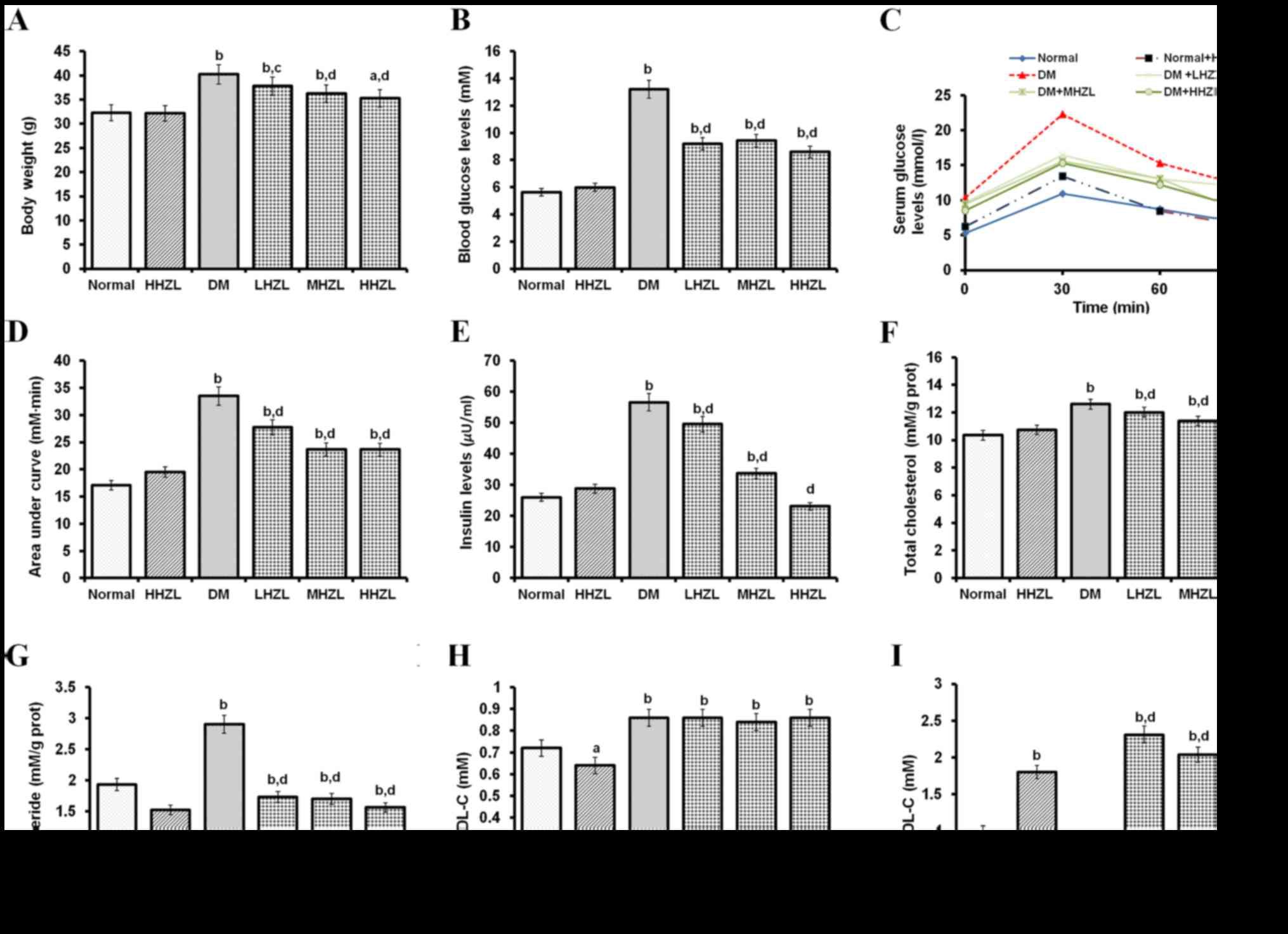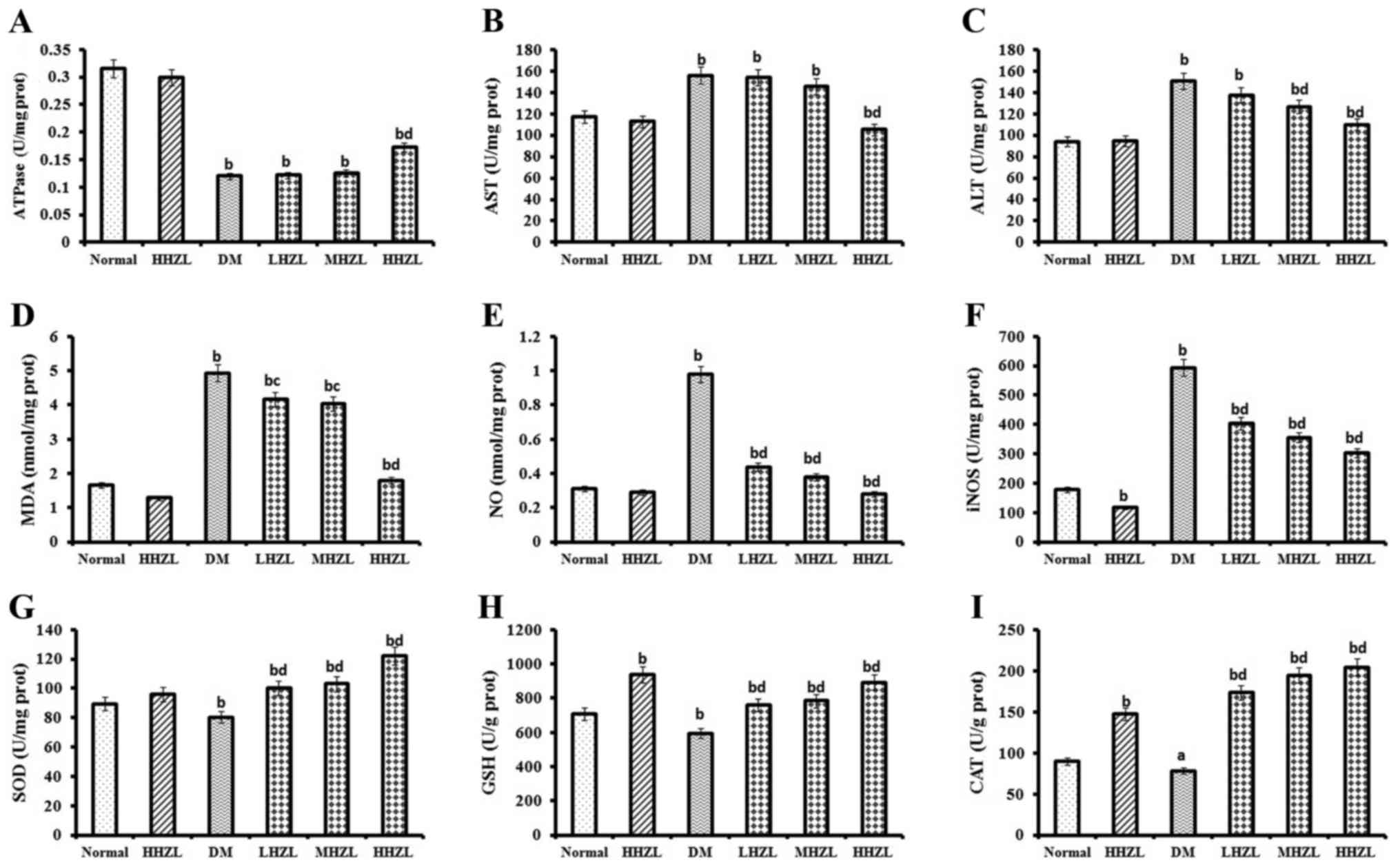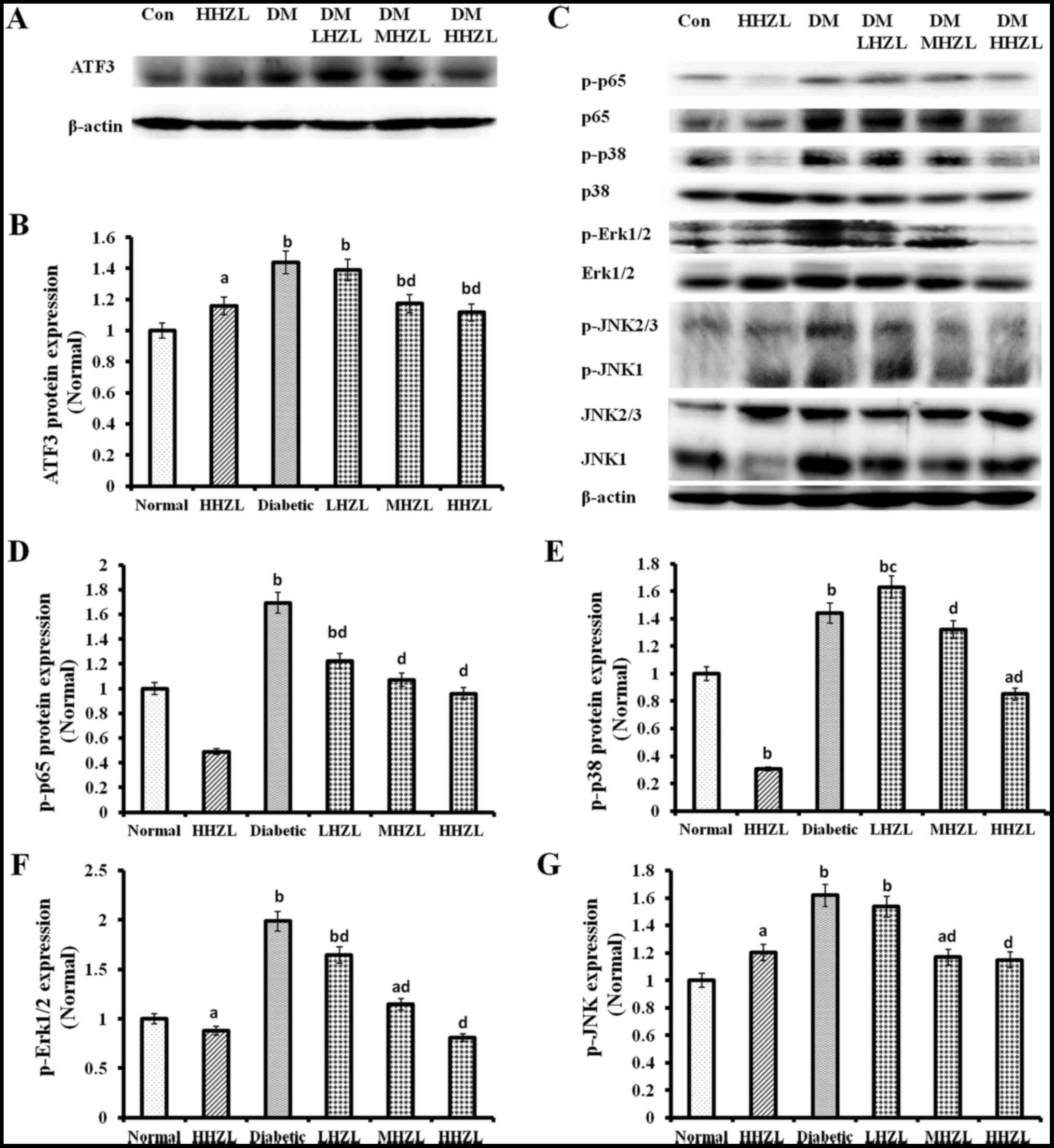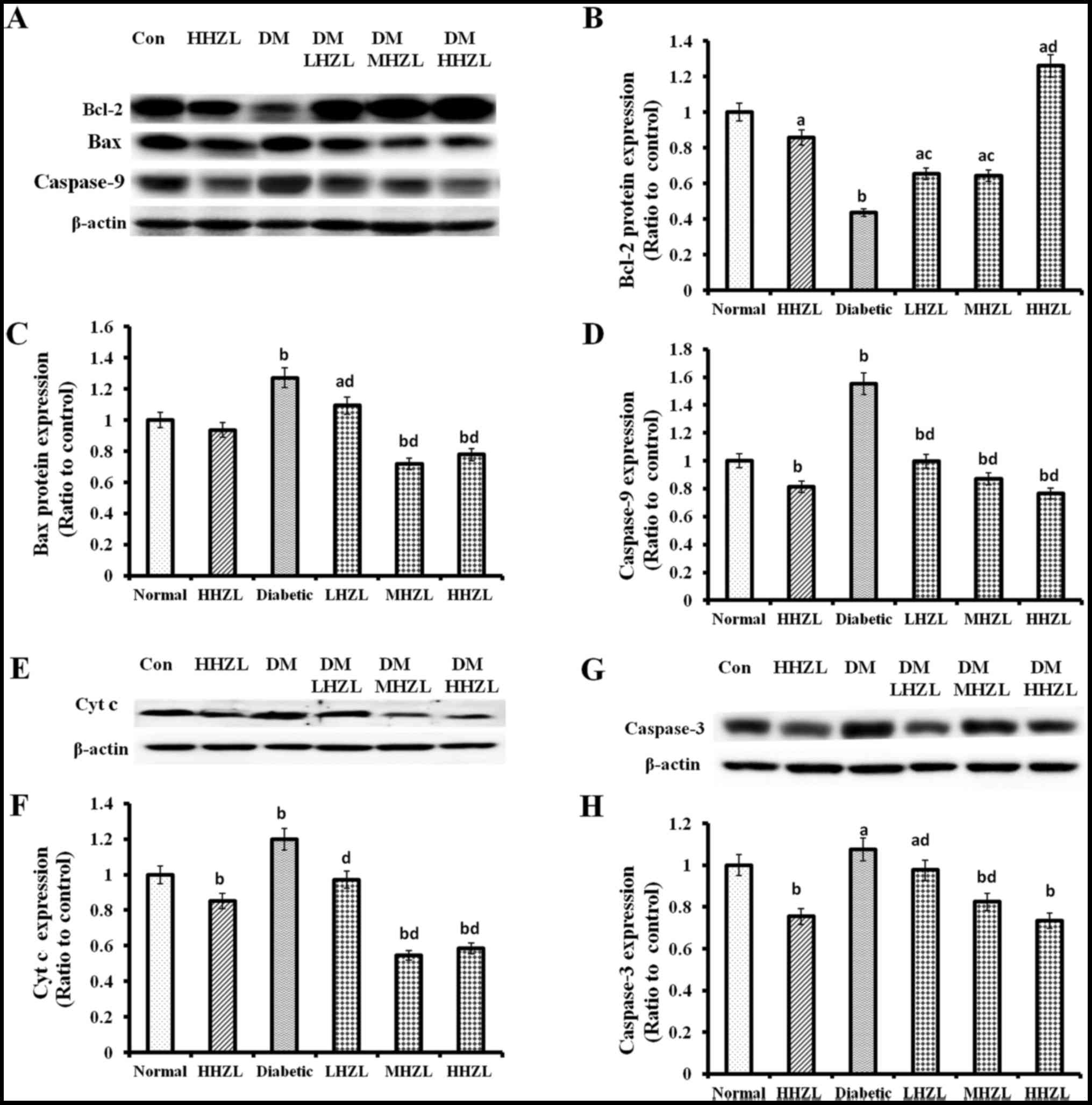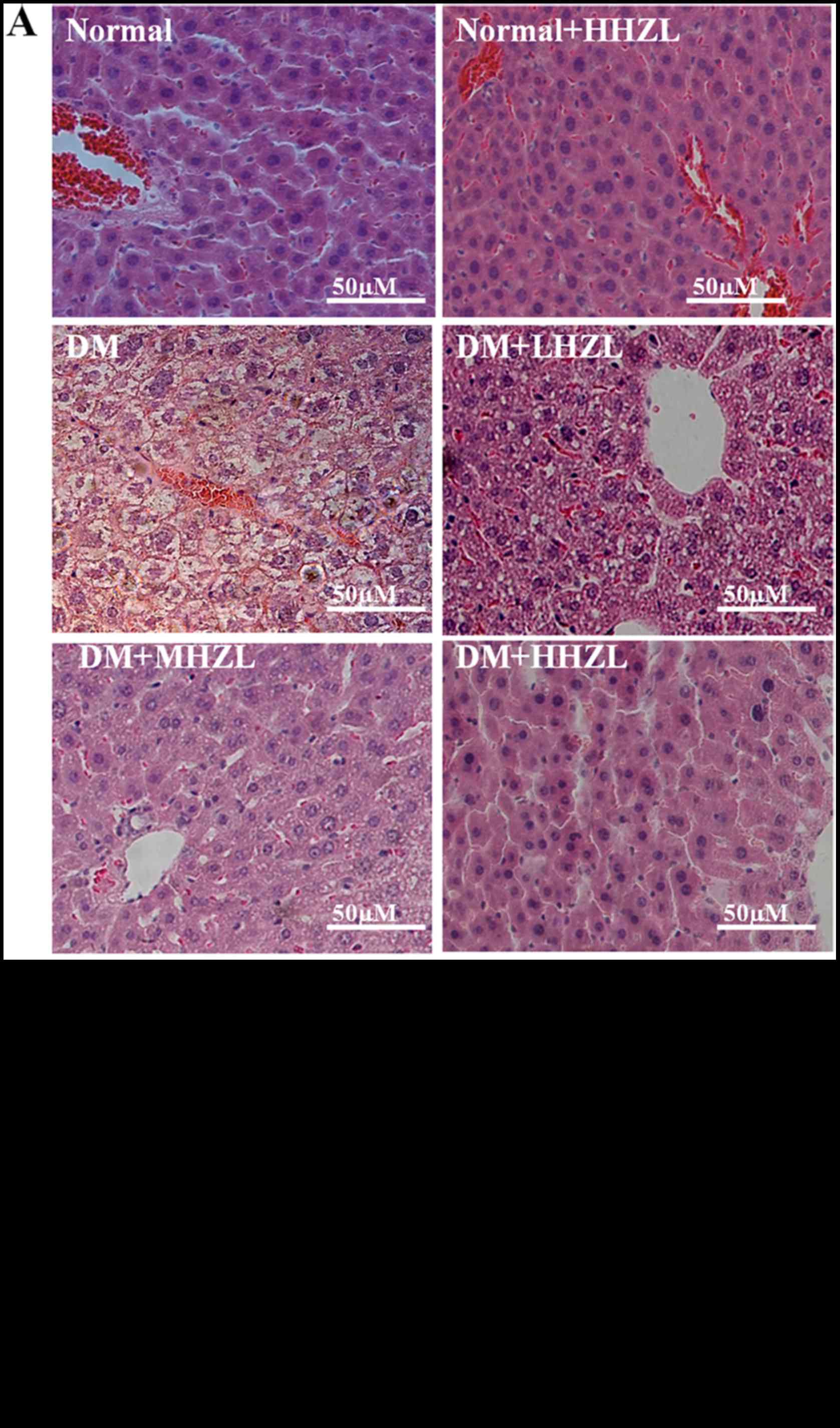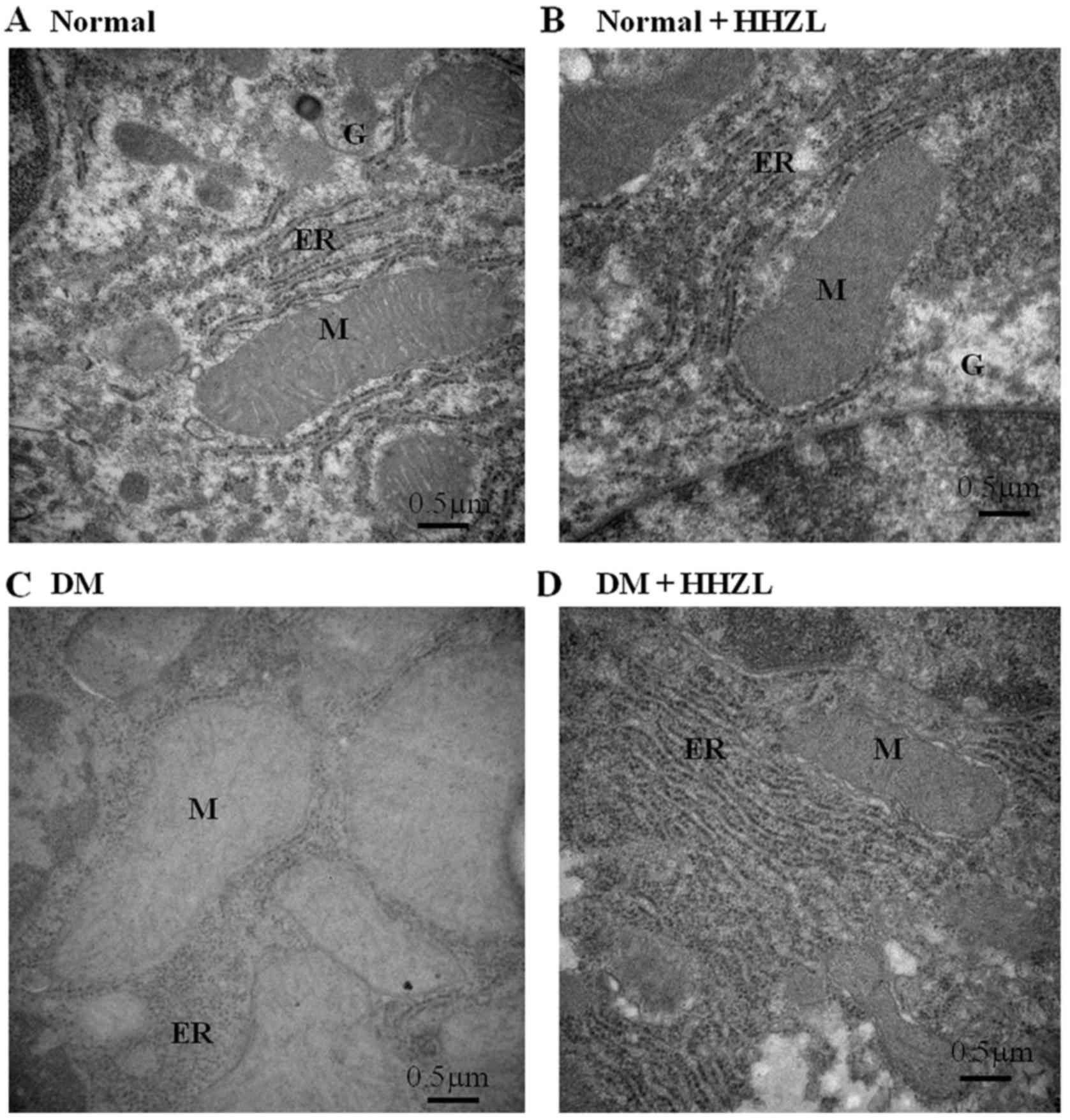|
1
|
Bullon P, Newman HN and Battino M:
Obesity, diabetes mellitus, atherosclerosis and chronic
periodontitis: a shared pathology via oxidative stress and
mitochondrial dysfunction? Periodontol. 2000. 64:139–153. 2014.
View Article : Google Scholar
|
|
2
|
Crujeiras AB, Díaz-Lagares A, Carreira MC,
Amil M and Casanueva FF: Oxidative stress associated to
dysfunctional adipose tissue: a potential link between obesity,
type 2 diabetes mellitus and breast cancer. Free Radic Res.
47:243–256. 2013. View Article : Google Scholar : PubMed/NCBI
|
|
3
|
Stefanović A, Kotur-Stevuljević J, Spasić
S, Bogavac-Stanojević N and Bujisić N: The influence of obesity on
the oxidative stress status and the concentration of leptin in type
2 diabetes mellitus patients. Diabetes Res Clin Pract. 79:156–163.
2008. View Article : Google Scholar
|
|
4
|
Shima T, Uto H, Ueki K, Takamura T, Kohgo
Y, Kawata S, Yasui K, Park H, Nakamura N, Nakatou T, et al:
Clinicopathological features of liver injury in patients with type
2 diabetes mellitus and comparative study of histologically proven
nonalcoholic fatty liver diseases with or without type 2 diabetes
mellitus. J Gastroenterol. 48:515–525. 2013. View Article : Google Scholar
|
|
5
|
Takeuchi J, Takada A, Nakada Y, Sawae G
and Okumura Y: Clinical and experimental studies of liver injury in
diabetes mellitus. II. Experimental studies. Acta Hepatosplenol.
17:228–240. 1970.PubMed/NCBI
|
|
6
|
Casas-Grajales S and Muriel P:
Antioxidants in liver health. World J Gastrointest Pharmacol Ther.
6:59–72. 2015. View Article : Google Scholar : PubMed/NCBI
|
|
7
|
Shin SM, Yang JH and Ki SH: Role of the
Nrf2-ARE pathway in liver diseases. Oxid Med Cell Longev.
763257:2013. View Article : Google Scholar : PubMed/NCBI
|
|
8
|
Stadler K, Jenei V, von Bölcsházy G,
Somogyi A and Jakus J: Increased nitric oxide levels as an early
sign of premature aging in diabetes. Free Radic Biol Med.
35:1240–1251. 2003. View Article : Google Scholar : PubMed/NCBI
|
|
9
|
Lucchesi AN, Freitas NT, Cassettari LL,
Marques SF and Spadella CT: Diabetes mellitus triggers oxidative
stress in the liver of alloxan-treated rats: a mechanism for
diabetic chronic liver disease. Acta Cir Bras. 28:502–508. 2013.
View Article : Google Scholar : PubMed/NCBI
|
|
10
|
Liu X, Zhang J, Ming Y, Chen X, Zeng M and
Mao Y: The aggravation of mitochondrial dysfunction in nonalcoholic
fatty liver disease accompanied with type 2 diabetes mellitus.
Scand J Gastroenterol. 50:1152–1159. 2015. View Article : Google Scholar : PubMed/NCBI
|
|
11
|
Xiong QB and Shi DW: Morphological and
histological studies of Chinese traditional drug 'hua jiao'
(pericarpium zanthoxyli) and its allied drugs. Yao Xue Xue Bao.
26:938–947. 1991.In Chinese.
|
|
12
|
Yang LC, Li R, Tan J and Jiang ZT:
Polyphenolics composition of the leaves of Zanthoxylum bungeanum
Maxim. grown in Hebei, China, and their radical scavenging
activities. J Agric Food Chem. 61:1772–1778. 2013. View Article : Google Scholar : PubMed/NCBI
|
|
13
|
Zhang Y, Luo Z, Wang D, He F and Li D:
Phytochemical profiles and antioxidant and antimicrobial activities
of the leaves of Zanthoxylum bungeanum. Scientific World Journal.
2014:1810722014.PubMed/NCBI
|
|
14
|
Zhang Y, Luo Z and Wang D: Efficient
quantification of the phenolic profiles of Zanthoxylum bungeanum
leaves and correlation between chromatographic fingerprint and
antioxidant activity. Nat Prod Res. 29:2024–2029. 2015. View Article : Google Scholar : PubMed/NCBI
|
|
15
|
Zhang Y, Wang D, Yang L, Zhou D and Zhang
J: Purification and characterization of flavonoids from the leaves
of Zanthoxylum bungeanum and correlation between their structure
and antioxidant activity. PLoS One. 9:e1057252014. View Article : Google Scholar : PubMed/NCBI
|
|
16
|
Sukito A and Tachibana S: Isolation of
hyperoside and isoquercitrin from Camellia sasanqua as antioxidant
agents. Pak J Biol Sci. 17:999–1006. 2014. View Article : Google Scholar
|
|
17
|
Li FR, Yu FX, Yao ST, Si YH, Zhang W and
Gao LL: Hyperin extracted from Manchurian rhododendron leaf induces
apoptosis in human endometrial cancer cells through a mitochondrial
pathway. Asian Pac J Cancer Prev. 13:3653–3656. 2012. View Article : Google Scholar : PubMed/NCBI
|
|
18
|
Ku SK, Kwak S, Kwon OJ and Bae JS:
Hyperoside inhibits high-glucose-induced vascular inflammation in
vitro and in vivo. Inflammation. 37:1389–1400. 2014. View Article : Google Scholar : PubMed/NCBI
|
|
19
|
Ku SK, Kim TH, Lee S, Kim SM and Bae JS:
Antithrombotic and profibrinolytic activities of
isorhamnetin-3-O-galactoside and hyperoside. Food Chem Toxicol.
53:197–204. 2013. View Article : Google Scholar
|
|
20
|
Li ZL, Hu J, Li YL, Xue F, Zhang L, Xie
JQ, Liu ZH, Li H, Yi D H, Liu JC, et al: The effect of hyperoside
on the functional recovery of the ischemic/reperfused isolated rat
heart: potential involvement of the extracellular signal-regulated
kinase 1/2 signaling pathway. Free Radic Biol Med. 57:132–140.
2013. View Article : Google Scholar : PubMed/NCBI
|
|
21
|
Jung HA, Islam MD, Kwon YS, Jin SE, Son
YK, Park JJ, Sohn HS and Choi JS: Extraction and identification of
three major aldose reductase inhibitors from Artemisia montana.
Food Chem Toxicol. 49:376–384. 2011. View Article : Google Scholar
|
|
22
|
Verma N, Amresh G, Sahu PK, Mishra N, Rao
ChV and Singh AP: Pharmacological evaluation of hyperin for
antihyperglycemic activity and effect on lipid profile in diabetic
rats. Indian J Exp Biol. 51:65–72. 2013.PubMed/NCBI
|
|
23
|
Liu X, Zhu L, Tan J, Zhou X, Xiao L, Yang
X and Wang B: Glucosidase inhibitory activity and antioxidant
activity of flavonoid compound and triterpenoid compound from
Agrimonia pilosa Ledeb. BMC Complement Altern Med. 14:122014.
View Article : Google Scholar : PubMed/NCBI
|
|
24
|
Friedman MI: Insulin-induced hyperphagia
in alloxan-diabetic rats fed a high-fat diet. Physiol Behav.
19:597–599. 1977. View Article : Google Scholar : PubMed/NCBI
|
|
25
|
Tang LQ, Wei W, Chen LM and Liu S: Effects
of berberine on diabetes induced by alloxan and a
high-fat/high-cholesterol diet in rats. J Ethnopharmacol.
108:109–115. 2006. View Article : Google Scholar : PubMed/NCBI
|
|
26
|
Dixon JL, Shen S, Vuchetich JP, Wysocka E,
Sun GY and Sturek M: Increased atherosclerosis in diabetic
dyslipidemic swine: protection by atorvastatin involves decreased
VLDL triglycerides but minimal effects on the lipoprotein profile.
J Lipid Res. 43:1618–1629. 2002. View Article : Google Scholar : PubMed/NCBI
|
|
27
|
Buko V, Lukivskaya O, Nikitin V, Tarasov
Y, Zavodnik L, Borodinsky A, Gorenshtein B, Janz B, Gundermann KJ
and Schumacher R: Hepatic and pancreatic effects of
polyenoylphosphatidylcholine in rats with alloxan-induced diabetes.
Cell Biochem Funct. 14:131–137. 1996.PubMed/NCBI
|
|
28
|
Zhang X, Liang W, Mao Y, Li H, Yang Y and
Tan H: Hepatic glucokinase activity is the primary defect in
alloxan-induced diabetes of mice. Biomed Pharmacother. 63:180–186.
2009. View Article : Google Scholar
|
|
29
|
Al-Numair KS, Veeramani C, Alsaif MA and
Chandramohan G: Influence of kaempferol, a flavonoid compound, on
membrane-bound ATPases in streptozotocin-induced diabetic rats.
Pharm Biol. 53:1372–1378. 2015. View Article : Google Scholar : PubMed/NCBI
|
|
30
|
Ramesh B and Pugalendi KV: Influence of
umbelliferone on membrane-bound ATPases in streptozotocin-induced
diabetic rats. Pharmacol Rep. 59:339–348. 2007.PubMed/NCBI
|
|
31
|
Çelık VK, Şahın ZD, Sari İ and Bakir S:
Comparison of oxidant/antioxidant, detoxification systems in
various tissue homogenates and mitochondria of rats with diabetes
induced by streptozocin. Exp Diabetes Res. 2012:3868312012.
View Article : Google Scholar
|
|
32
|
Alevizos I, Misra J, Bullen J, Basso G,
Kelleher J, Mantzoros C and Stephanopoulos G: Linking hepatic
transcriptional changes to high-fat diet induced physiology for
diabetes-prone and obese-resistant mice. Cell Cycle. 6:1631–1638.
2007. View Article : Google Scholar : PubMed/NCBI
|
|
33
|
Feng W, Zhao T, Mao G, Wang W, Feng Y, Li
F, Zheng D, Wu H, Jin D, Yang L, et al: Type 2 diabetic rats on
diet supplemented with chromium malate show improved
glycometabolism, glycometabolism-related enzyme levels and lipid
metabolism. PLoS One. 10:e01259522015. View Article : Google Scholar : PubMed/NCBI
|
|
34
|
Banks MA, Porter DW, Martin WG and
Castranova V: Effects of in vitro ozone exposure on peroxidative
damage, membrane leakage, and taurine content of rat alveolar
macrophages. Toxicol Appl Pharmacol. 105:55–65. 1990. View Article : Google Scholar : PubMed/NCBI
|
|
35
|
Bahmani F, Tajadadi-Ebrahimi M, Kolahdooz
F, Mazouchi M, Hadaegh H, Jamal AS, Mazroii N, Asemi S and Asemi Z:
The consumption of synbiotic bread containing Lactobacillus
sporogenes and inulin affects nitric oxide and malondialdehyde in
patients with type 2 diabetes mellitus: randomized, double-blind,
placebo-controlled trial. J Am Coll Nutr. 35:506–513. 2016.
View Article : Google Scholar
|
|
36
|
Allen-Jennings AE, Hartman MG, Kociba GJ
and Hai T: The roles of ATF3 in glucose homeostasis. A transgenic
mouse model with liver dysfunction and defects in endocrine
pancreas. J Biol Chem. 276:29507–29514. 2001. View Article : Google Scholar : PubMed/NCBI
|
|
37
|
Hua B, Tamamori-Adachi M, Luo Y, Tamura K,
Morioka M, Fukuda M, Tanaka Y and Kitajima S: A splice variant of
stress response gene ATF3 counteracts NF-kappaB-dependent
anti-apoptosis through inhibiting recruitment of CREB-binding
protein/300 coactivator. J Biol Chem. 281:1620–1629. 2006.
View Article : Google Scholar
|
|
38
|
Jung DH, Kim KH, Byeon HE, Park HJ, Park
B, Rhee DK, Um SH and Pyo S: Involvement of ATF3 in the negative
regulation of iNOS expression and NO production in activated
macrophages. Immunol Res. 62:35–45. 2015. View Article : Google Scholar : PubMed/NCBI
|
|
39
|
Lu D, Chen J and Hai T: The regulation of
ATF3 gene expression by mitogen-activated protein kinases. Biochem
J. 401:559–567. 2007. View Article : Google Scholar :
|
|
40
|
Inoue K, Zama T, Kamimoto T, Aoki R, Ikeda
Y, Kimura H and Hagiwara M: TNFalpha-induced ATF3 expression is
bidirectionally regulated by the JNK and ERK pathways in vascular
endothelial cells. Genes Cells. 9:59–70. 2004. View Article : Google Scholar : PubMed/NCBI
|
|
41
|
Mashima T, Udagawa S and Tsuruo T:
Involvement of transcriptional repressor ATF3 in acceleration of
caspase protease activation during DNA damaging agent-induced
apoptosis. J Cell Physiol. 188:352–358. 2001. View Article : Google Scholar : PubMed/NCBI
|
|
42
|
Ma JQ, Ding J, Zhang L and Liu CM: Ursolic
acid protects mouse liver against CCl4-induced oxidative stress and
inflammation by the MAPK/NF-κB pathway. Environ Toxicol Pharmacol.
37:975–983. 2014. View Article : Google Scholar : PubMed/NCBI
|
|
43
|
Kohl T, Gehrke N, Schad A, Nagel M, Wörns
MA, Sprinzl MF, Zimmermann T, He YW, Galle PR, Schuchmann M, et al:
Diabetic liver injury from streptozotocin is regulated through the
caspase-8 homolog cFLIP involving activation of JNK2 and
intrahepatic immunocompetent cells. Cell Death Dis. 4:e7122013.
View Article : Google Scholar : PubMed/NCBI
|
|
44
|
Sawant SP, Dnyanmote AV and Mehendale HM:
Mechanisms of inhibited liver tissue repair in toxicant challenged
type 2 diabetic rats. Toxicology. 232:200–215. 2007. View Article : Google Scholar : PubMed/NCBI
|
|
45
|
Devi SS and Mehendale HM: The role of
NF-kappaB signaling in impaired liver tissue repair in
thioacetamide-treated type 1 diabetic rats. Eur J Pharmacol.
523:127–136. 2005. View Article : Google Scholar : PubMed/NCBI
|
|
46
|
Farombi EO, Shrotriya S and Surh YJ:
Kolaviron inhibits dimethyl nitrosamine-induced liver injury by
suppressing COX-2 and iNOS expression via NF-kappaB and AP-1. Life
Sci. 84:149–155. 2009. View Article : Google Scholar
|
|
47
|
Muriel P: NF-kappaB in liver diseases: a
target for drug therapy. J Appl Toxicol. 29:91–100. 2009.
View Article : Google Scholar
|
|
48
|
Bhattacharya S, Gachhui R and Sil PC: The
prophylactic role of D-saccharic acid-1,4-lactone against
hyperglycemia-induced hepatic apoptosis via inhibition of both
extrinsic and intrinsic pathways in diabetic rats. Food Funct.
4:283–296. 2013. View Article : Google Scholar
|
|
49
|
Rashid K, Das J and Sil PC: Taurine
ameliorate alloxan induced oxidative stress and intrinsic apoptotic
pathway in the hepatic tissue of diabetic rats. Food Chem Toxicol.
51:317–329. 2013. View Article : Google Scholar
|
|
50
|
Zhou L, An XF, Teng SC, Liu JS, Shang WB,
Zhang AH, Yuan YG and Yu JY: Pretreatment with the total flavone
glycosides of flos Abelmoschus manihot and hyperoside prevents
glomerular podocyte apoptosis in streptozotocin-induced diabetic
nephropathy. J Med Food. 15:461–468. 2012. View Article : Google Scholar : PubMed/NCBI
|
|
51
|
An X, Zhang L, Yuan Y, Wang B, Yao Q, Li L
and Zhang J, He M and Zhang J: Hyperoside pre-treatment prevents
glomerular basement membrane damage in diabetic nephropathy by
inhibiting podocyte heparanase expression. Sci Rep. 7:64132017.
View Article : Google Scholar : PubMed/NCBI
|
|
52
|
Zhang Z, Sethiel MS, Shen W, Liao S and
Zou Y: Hyperoside downregulates the receptor for advanced glycation
end products (RAGE) and promotes proliferation in ECV304 cells via
the c-Jun N-terminal kinases (JNK) pathway following stimulation by
advanced glycation end-products in vitro. Int J Mol Sci.
14:22697–22707. 2013. View Article : Google Scholar : PubMed/NCBI
|
|
53
|
Martín MA, Ramos S, Cordero-Herrero I,
Bravo L and Goya L: Cocoa phenolic extract protects pancreatic beta
cells against oxidative stress. Nutrients. 5:2955–2968. 2013.
View Article : Google Scholar : PubMed/NCBI
|
|
54
|
Coskun O, Kanter M, Korkmaz A and Oter S:
Quercetin, a flavonoid antioxidant, prevents and protects
streptozotocin-induced oxidative stress and beta-cell damage in rat
pancreas. Pharmacol Res. 51:117–123. 2005. View Article : Google Scholar : PubMed/NCBI
|
|
55
|
Adewole SO, Caxton-Martins EA and Ojewole
JA: Protective effect of quercetin on the morphology of pancreatic
beta-cells of streptozotocin-treated diabetic rats. Afr J Tradit
Complement Altern Med. 4:64–74. 2006.PubMed/NCBI
|
|
56
|
Youl E, Bardy G, Magous R, Cros G, Sejalon
F, Virsolvy A, Richard S, Quignard JF, Gross R, Petit P, et al:
Quercetin potentiates insulin secretion and protects INS-1
pancreatic β-cells against oxidative damage via the ERK1/2 pathway.
Br J Pharmacol. 161:799–814. 2010. View Article : Google Scholar : PubMed/NCBI
|
|
57
|
Bardy G, Virsolvy A, Quignard JF, Ravier
MA, Bertrand G, Dalle S, Cros G, Magous R, Richard S and Oiry C:
Quercetin induces insulin secretion by direct activation of L-type
calcium channels in pancreatic beta cells. Br J Pharmacol.
169:1102–1113. 2013. View Article : Google Scholar : PubMed/NCBI
|















